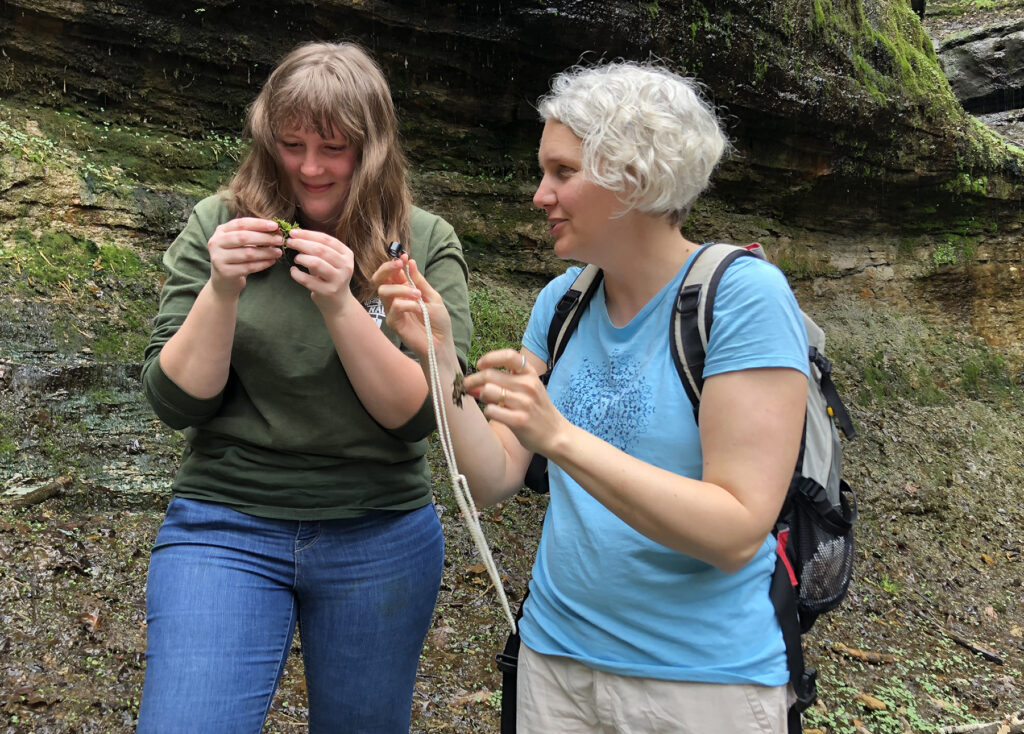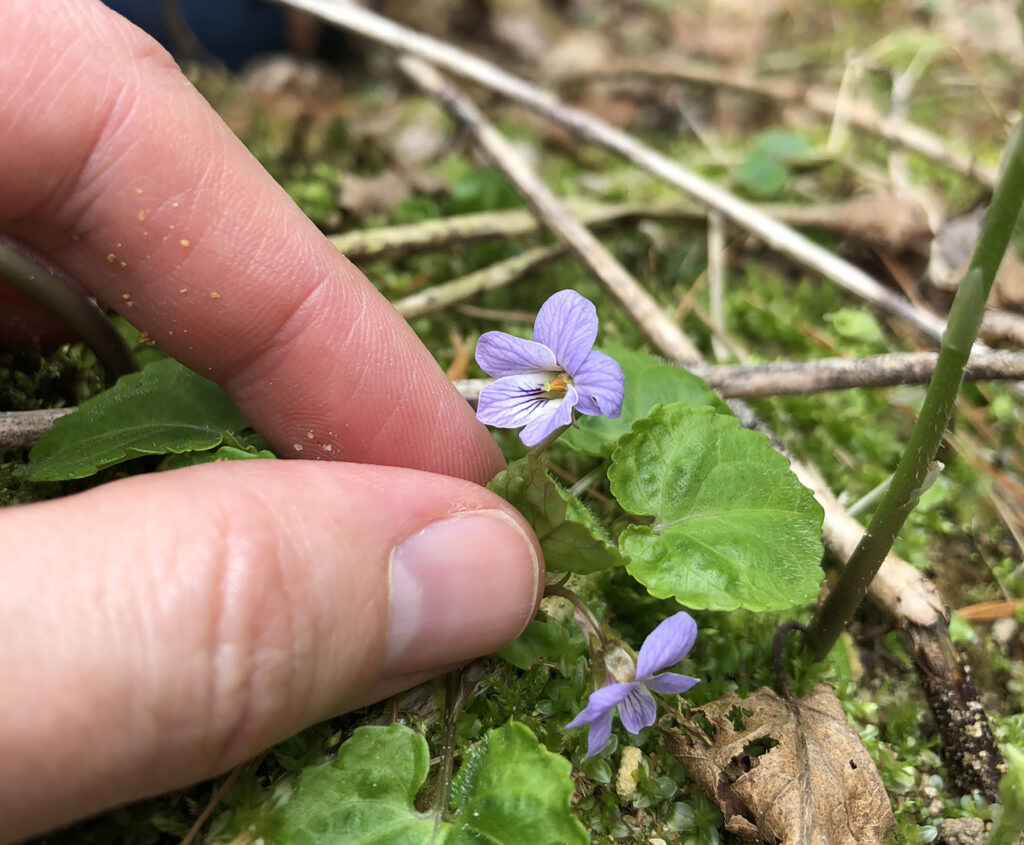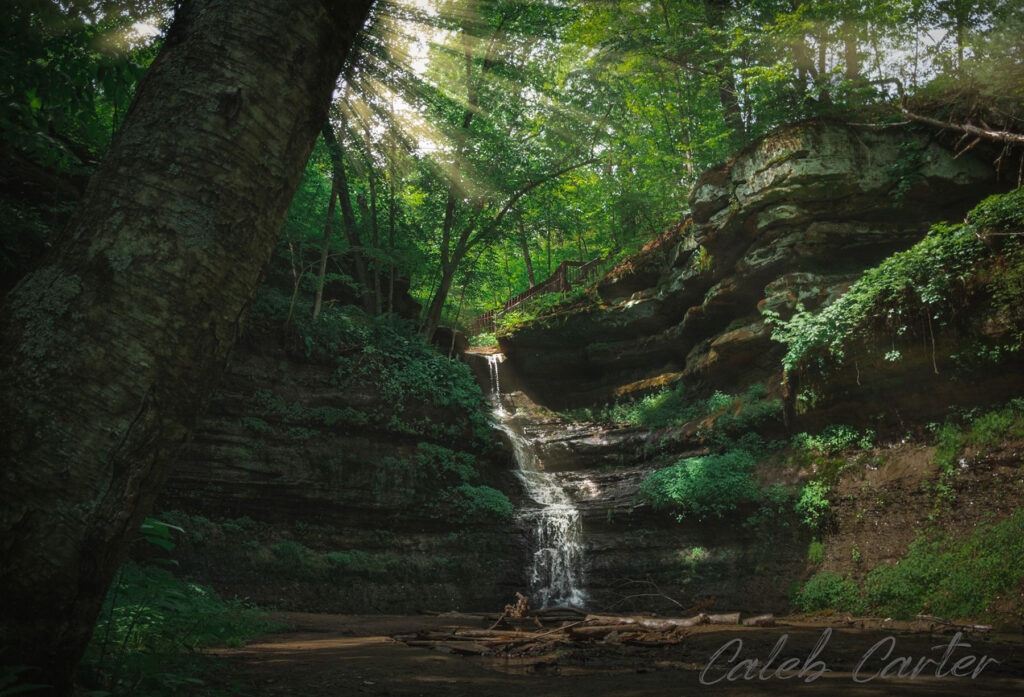Devil’s Punchbowl Preserve near Menomonie has been protected for nearly 25 years by the Landmark Conservancy. The sheer, sandstone cliffs and waterfall are a geologic wonder along the Red Cedar River valley.
A new study by UW-Stout biology Professor Amanda Little and student Britney Serafina is shedding more light on the preserve and its unique plants. They undertook a six-month-long challenge of identifying and cataloging every plant species, finding more than 200 within the three-acre site.
Little and Serafina will talk about their experience during a Conservancy virtual presentation from 5:30 to 6:30 p.m. on Wednesday, Nov. 9; also, find the event on Facebook.

Student Britney Serafina, left, and Professor Amanda Little talk about their plant research at Devil’s Punchbowl. / Madelyn Lisius photo
In 1998, the Stout University Foundation donated the Devil’s Punchbowl to the Landmark Conservancy, a nonprofit land trust based in Menomonie that protects and manages more than 40,000 acres in western and northwestern Wisconsin.
This year, a grant from the Wisconsin Rare Plant Preservation Fund of the Natural Resources Foundation of Wisconsin provided funding for a definitive plant survey of the site.
“It’s a unique geologic and botanical preserve located in the heart of western Wisconsin farmland,” Little said. “We hope this research will highlight the sensitive plants also present at the site so that they can be better preserved and less trampling off-trail may occur.”
The research by Little and Serafina between May and October revealed 200-plus vascular plant species; more than 30 mosses and liverworts, including two mosses new to Dunn County; 12 species of ferns and 12 species of sedge.

Viola selkirkii, or Selkirk’s violet, was one of more than 200 species of plants found at the site. / Amanda Little photo
“It was surprising to find so much diversity in a small area,” Little said.
Two of the moss species hadn’t previously been identified in Dunn County, a heavily logged and farmed region, Little said. Each of the species “only had one individual clinging to untrampled cliff faces in the preserve, indicating that conservation may be needed.”
They received support with moss identification from Joe Rohrer, UW-Eau Claire faculty emeritus.
Plants at the site represent at least eight ecological community types found in the state.
“I was interested in doing this study because of my growing fascination in plant studies. Once quarantine started in 2020, I found that my true passion lies with plant identification,” said Serafina, an environmental science major from Baldwin.
New stairs installed this summer lead from 410th Street — Paradise Valley Road — to the floor of the circular-shaped Devil’s Punchbowl.
Future surveys will be done to document species change over time at the preserve, Little said.
Devil’s Punchbowl also is home to rare land snails.
Along with the environmental science major, UW-Stout has undergraduate programs in applied science, with a concentration available in biology, and in applied biochemistry and molecular biology.
Written by Jerry Poling
Link to original story: https://www.uwstout.edu/about-us/news-center/research-devils-punchbowl-identifies-more-200-plant-species

